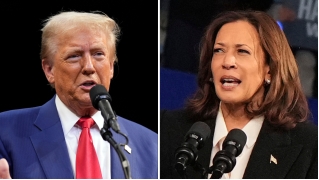
Former President Trump has a slight edge over Vice President Harris with early voters in battleground states, new polling shows, a promising sign for the Republican in the highly competitive presidential race.
A Harvard CAPS/Harris poll found 48 percent of voters who said they would cast their ballots early in critical swing states picked Trump, while 47 percent sided with Harris. Another 5 percent of respondents said they went with another choice or had not yet voted.
Trump’s “swing state strategy is paying off,” said Mark Penn, co-director of the poll. Among all voters in the key swing states, Trump was up 2 points, with 48 percent support to Harris’s 46 percent, the survey shows.
Harris, though, surges to a strong 8-point lead among early voters nationwide, with 51 percent support to Trump’s 43 percent. Across the board, 45 percent of voters reported they’d be voting early, compared to 50 percent who plan to cast their ballots on Election Day.
A small handful of battleground states will be key to deciding who wins the Oval Office this fall as Harris and Trump enter the homestretch of a razor-tight race, with less than a month until Election Day.
Polling has shown the White House rivals locked in narrow races in Michigan, Wisconsin, Arizona, Pennsylvania and elsewhere as they blitz the swing states with rallies and campaign stops.
Nationally, an aggregate of polling compiled by The Hill/Decision Desk HQ shows the vice president leading her GOP rival by 3 points, with roughly 50 percent support to Trump’s 47 percent. The new Harvard CAPS/Harris poll finds the race even closer, with Harris up just a point over the former president among registered voters overall.
The Harvard/Harris poll, conducted Oct. 11-13, surveyed 3,145 registered voters — including 2,596 likely voters and 898 battleground state voters. The margin of error for the total sample was plus or minus 1.8 percentage points.
Results were weighted for age within gender, region, race/ethnicity, marital status, household size, income, employment, education, political party and political ideology where necessary to align them with their actual proportions in the population. Propensity score weighting was also used to adjust for respondents’ propensity to be online.